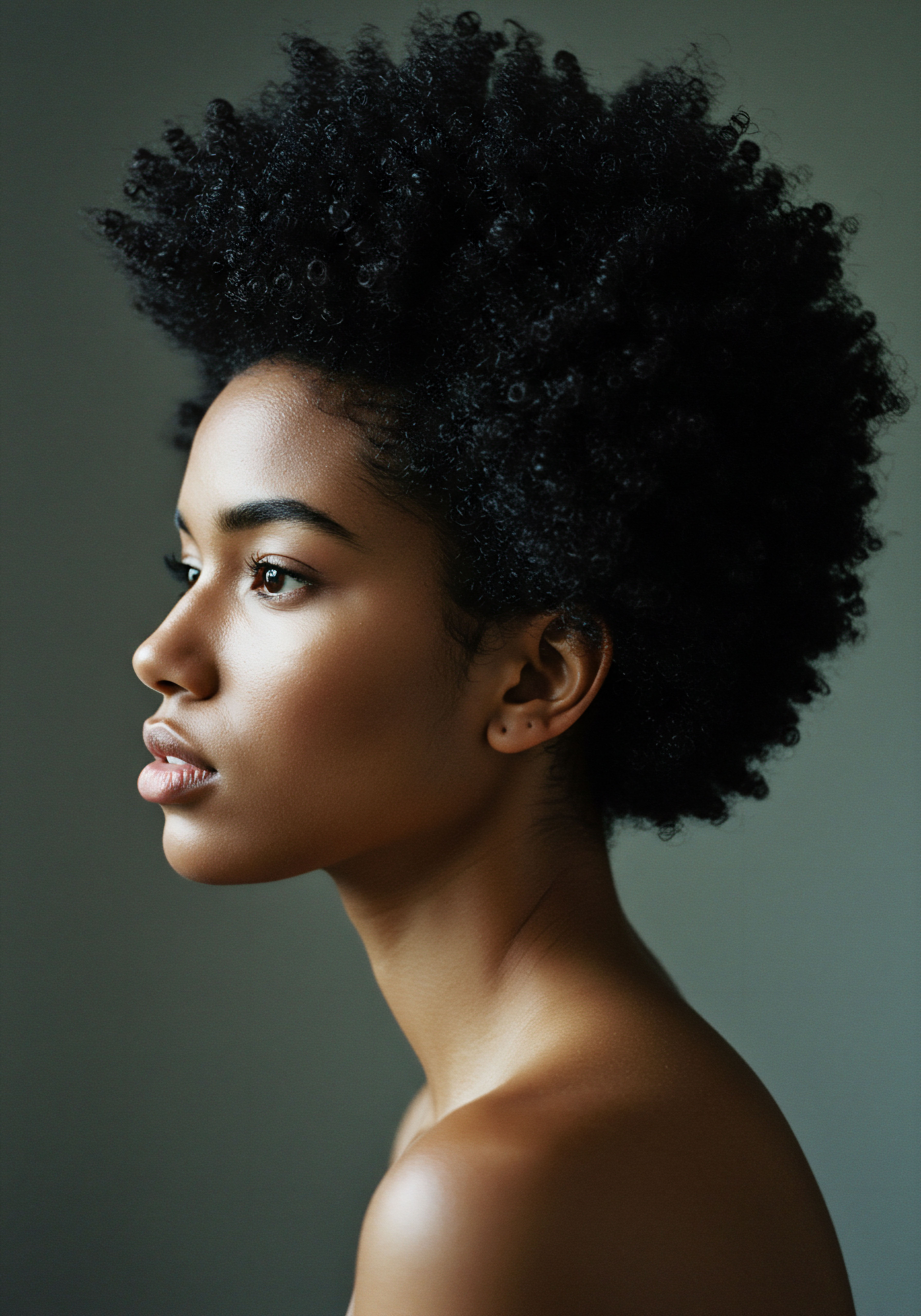
Roots
Consider the quiet murmur of understanding that arises when we gaze upon our hair, not merely as strands, but as living extensions of our lineage. It holds stories, silent and profound, whispered down through generations in the very helix of our being. This deep-seated connection suggests a truth beyond surface observation ❉ our hair’s unique characteristics, its curl, its strength, its very thirst, might well be inscribed within our genetic blueprint. Can truly knowing these predispositions reshape the way we select our hair care rituals, moving beyond trial and error towards a more knowing, attuned approach?
The foundation of hair science often begins with visible attributes, yet beneath the surface, a microscopic world hums with activity. Each strand, a complex protein filament, emerges from a follicle, itself a marvel of biological engineering. The shape of this follicle, whether round, oval, or flat, plays a decisive role in determining the curl pattern of the hair that grows from it.
A flatter, more elliptical follicle typically yields tightly coiled strands, while a rounder one produces straight hair. This fundamental anatomical difference, largely dictated by our genetic heritage, establishes the very canvas upon which all hair care decisions are made.

What Gives Hair Its Unique Structure?
The intricate architecture of hair stems from its primary protein, Keratin. This fibrous protein, arranged in complex bonds, forms the cortex, the central and strongest part of the hair shaft. Surrounding the cortex is the cuticle, an outer layer of overlapping scales that act as a protective shield. The arrangement and integrity of these cuticle scales directly influence hair porosity—its ability to absorb and retain moisture.
Genetically, variations in the genes responsible for keratin production and assembly, as well as those dictating the formation of the cuticle, can lead to inherent differences in how porous a person’s hair naturally is. Some individuals possess a naturally tighter cuticle, making their hair less prone to rapid moisture loss, while others exhibit a more open cuticle, leading to quicker absorption but also faster release of hydration.
Our hair’s intrinsic nature, from curl pattern to porosity, is often a whisper from our genetic past.
Beyond structure, the density of hair—the number of individual strands per square inch on the scalp—also bears a significant genetic signature. Some individuals are born with a greater number of hair follicles, resulting in naturally thicker hair, while others have fewer, leading to a finer appearance. This inherent density affects everything from how products distribute to the weight and movement of the hair. Similarly, the natural color of hair, a spectrum of hues from deepest ebony to palest blonde, is determined by the types and amounts of melanin pigments produced by specialized cells within the hair follicle, a process under precise genetic regulation.
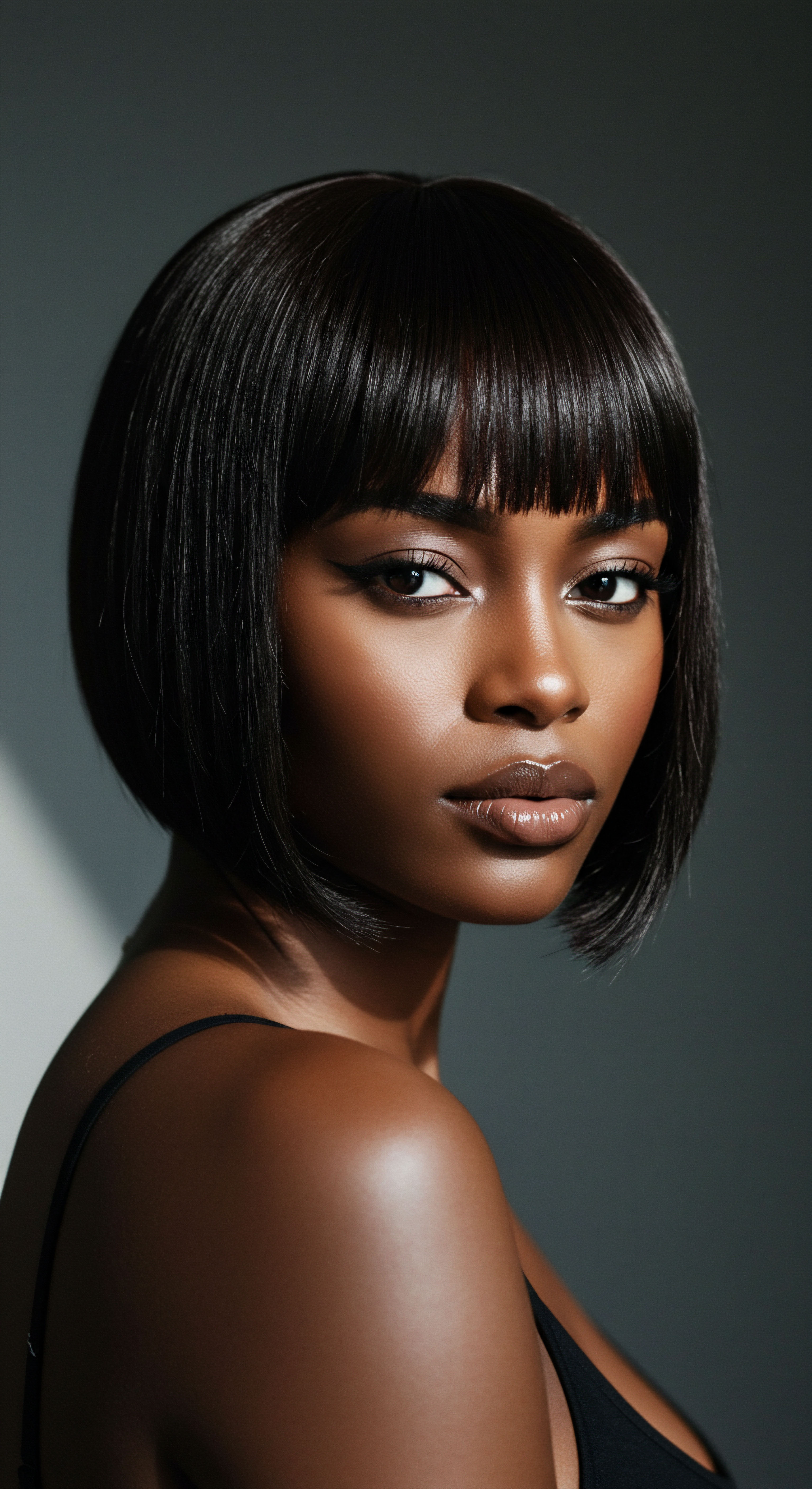
Can Genes Shape Our Hair’s Hydration Needs?
Indeed, the genetic legacy extends to the hair’s predisposition for moisture. While external factors such as heat styling or chemical treatments certainly impact hydration levels, there exists an underlying genetic propensity. Certain genetic markers have been linked to variations in the composition of the hair’s lipid barrier, which helps seal in moisture.
A compromised or less robust lipid barrier, potentially influenced by genetic factors, could mean hair is inherently more susceptible to dryness, regardless of environmental aggressors. This innate thirst means product choices focused on deep, sustained hydration become not just beneficial, but truly foundational.
The very rhythm of hair growth and shedding, known as the hair growth cycle, also finds its tempo in our genes. This cycle consists of three main phases ❉
- Anagen ❉ The active growth phase, which can last from two to seven years, largely determining the maximum length hair can achieve.
- Catagen ❉ A transitional phase lasting a few weeks, during which hair growth stops.
- Telogen ❉ The resting phase, typically lasting a few months, after which the hair sheds.
Genetic variations can influence the duration of the anagen phase, explaining why some individuals can grow their hair to remarkable lengths while others find their hair growth plateaus much sooner. Understanding these inherent cycles can inform realistic expectations for hair length and growth, guiding product choices towards formulations that support scalp health and follicle vitality throughout these phases.

Ritual
Stepping from the quiet contemplation of our genetic makeup, we arrive at the practical realm of daily and weekly hair care. This is where knowledge transforms into action, where the subtle cues from our genetic predispositions begin to guide our hands as we select potions and elixirs for our strands. It is a journey from observation to intention, seeking not just to react to our hair’s present state, but to anticipate its needs based on its inherited tendencies. This section considers how an understanding of our genetic blueprint can thoughtfully inform the ritual of hair care, moving beyond general advice to truly personalized attention.
The traditional approach to choosing hair products often relies on observable traits ❉ “Is my hair dry?” “Is it oily?” “Is it fine or coarse?” While these are valid starting points, genetic insights offer a deeper layer of discernment. For instance, if genetic information suggests a predisposition to a more open cuticle structure, even if the hair currently appears healthy, a conscious choice towards products with higher emollient content and humectants that draw in and seal moisture might be a proactive measure. Conversely, those with a genetically predisposed tighter cuticle might benefit from lighter formulations that avoid product buildup, which can weigh down their hair.

How Do Genetic Insights Guide Product Selection?
When considering how genetic predispositions might alter product choices, it becomes clear that the impact extends across several product categories.
- Cleansers ❉ For those with genetically oilier scalps due to more active sebaceous glands, a gentle clarifying shampoo might be a regular necessity, while someone predisposed to dryness might opt for co-washing or ultra-moisturizing, sulfate-free cleansers.
- Conditioners and Deep Treatments ❉ Genetic porosity plays a significant role here. Hair with a naturally higher porosity, often a genetic trait, will benefit immensely from protein treatments and rich, deeply penetrating conditioners to fortify the hair shaft. Lower porosity hair, by contrast, may prefer lighter conditioners that do not sit on the surface, opting for steaming to aid absorption.
- Styling Products ❉ The inherent curl pattern, dictated by follicle shape, directly influences styling product needs. Tightly coiled hair often requires heavier creams and gels for definition and moisture retention, while looser waves might be overwhelmed by such products, instead preferring mousses or light sprays.
- Scalp Care ❉ Genetic predispositions to conditions like dandruff or sensitive scalp necessitate specific product ingredients. For example, if a genetic marker points to a higher likelihood of scalp inflammation, products with soothing, anti-inflammatory components become a priority.
This informed selection moves beyond simple marketing claims to a more targeted, efficient regimen, reducing wasted product and potentially preventing future hair concerns.
Understanding our genetic blueprint transforms hair care from guesswork into an intentional, informed ritual.

Can Understanding Inherited Sensitivities Refine Ingredient Choices?
Indeed, genetic predispositions can highlight sensitivities to certain ingredients. While allergies are typically immediate and severe reactions, sensitivities can manifest as subtle irritation, dryness, or lack of efficacy over time. For example, some individuals may have a genetic variation that makes their hair more prone to protein overload from excessive use of protein-rich products, leading to stiffness and breakage.
For others, a genetic predisposition to dry scalp might mean avoiding ingredients like harsh alcohols or strong surfactants, which can exacerbate dryness. A more precise approach to ingredient selection, guided by genetic insights, allows for the avoidance of potential irritants or counterproductive components, paving the way for truly harmonious hair health.
Consider the daily regimen. Instead of blindly following popular trends, an individual armed with genetic understanding can construct a routine tailored to their hair’s innate needs. This might mean less frequent washing for those with genetically dry hair, or more consistent deep conditioning for hair predisposed to low elasticity. The ritual becomes a thoughtful conversation with one’s own body, a dance between inherited traits and intelligent care.
| Hair Trait (Genetic Influence) Curl Pattern |
| Potential Genetic Predisposition Follicle shape (round to flat) |
| Product Choice Shift Styling creams/gels for definition versus lighter mousses |
| Hair Trait (Genetic Influence) Porosity |
| Potential Genetic Predisposition Cuticle structure integrity |
| Product Choice Shift Protein treatments for high porosity versus lightweight conditioners for low porosity |
| Hair Trait (Genetic Influence) Scalp Oiliness |
| Potential Genetic Predisposition Sebaceous gland activity |
| Product Choice Shift Clarifying shampoos versus co-washes |
| Hair Trait (Genetic Influence) Elasticity/Strength |
| Potential Genetic Predisposition Keratin gene variations |
| Product Choice Shift Emphasis on strengthening masks versus moisture-only treatments |
| Hair Trait (Genetic Influence) Genetic insights offer a more precise pathway to selecting effective hair care products. |
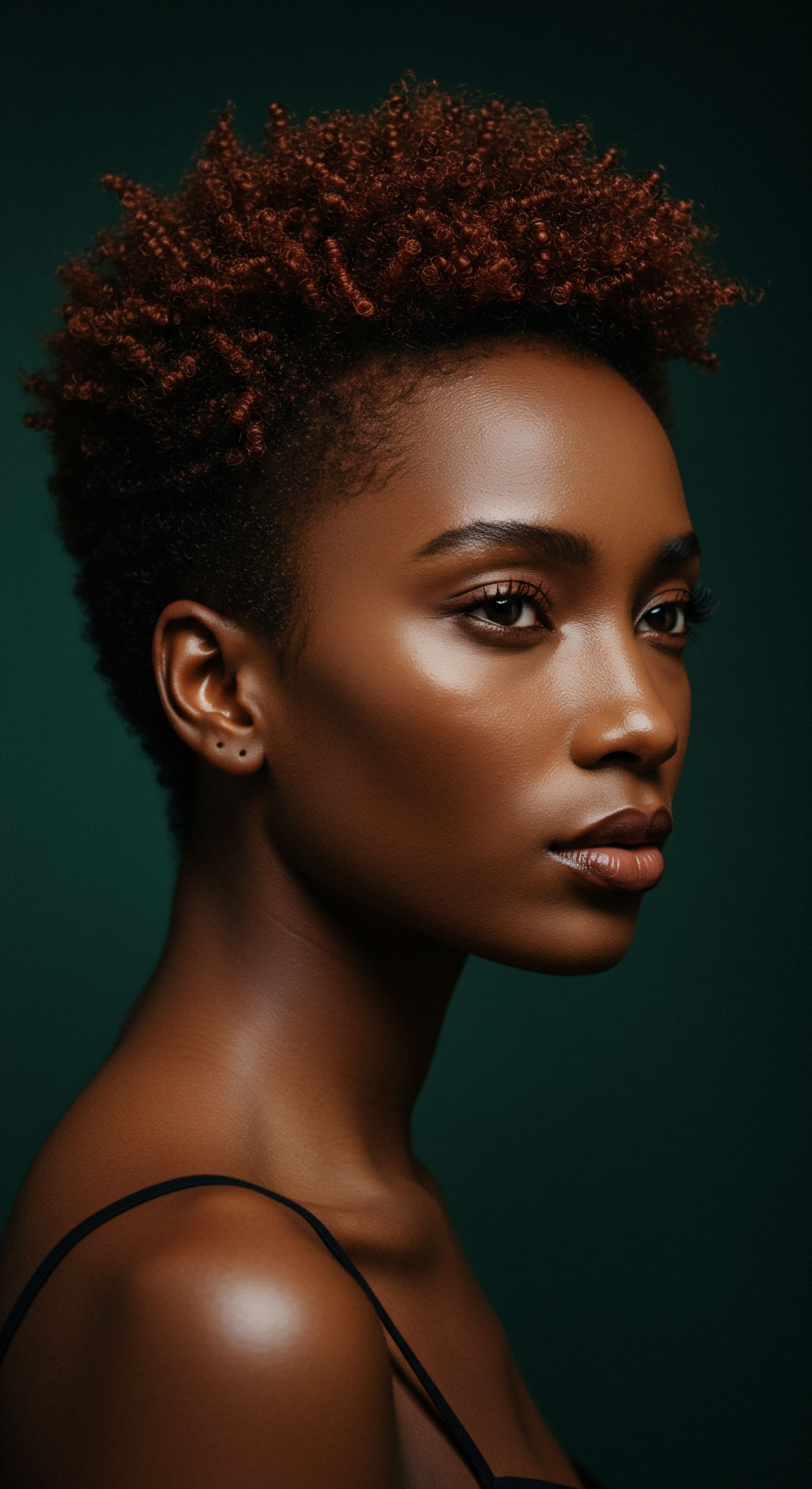
Relay
Moving beyond the personal ritual, we arrive at a more expansive understanding, where the echoes of our genetic heritage meet the broader currents of culture and scientific advancement. This segment invites us to consider the profound implications of genetic predispositions, not just for individual product selection, but for our collective understanding of hair, its care, and its place in our identity. It is here that the intersection of deep biological insights and societal narratives truly begins to illuminate the path forward for textured hair care.
The concept of hair as a marker of identity is ancient, woven into the very fabric of human societies. From ancestral styling practices to modern beauty standards, hair has always held significant cultural weight. For individuals with textured hair, this cultural context is particularly rich and complex, often carrying histories of adaptation, resilience, and reclamation. Genetic insights, in this light, become more than just scientific data; they offer a new lens through which to appreciate the inherent diversity and beauty of textured hair, moving beyond generalized notions of “good” or “bad” hair to a celebration of individual genetic uniqueness.

Can Personalized Genomics Redefine Hair Care Science?
The advent of personalized genomics stands as a beacon for the future of hair care. While direct-to-consumer genetic testing for hair traits is still in its nascent stages, the potential is considerable. Such tests aim to identify specific genetic markers associated with various hair characteristics, such as natural curl pattern, density, propensity for frizz, susceptibility to environmental damage, and even nutritional deficiencies that might impact hair health. This level of granular data could revolutionize product formulation and consumer guidance.
For instance, research published in the Journal of Investigative Dermatology explored the genetic basis of hair texture and density in diverse populations, identifying several gene variants associated with distinct curl patterns and hair shaft diameters. One particular study found that specific alleles of the EDAR gene, commonly found in East Asian populations, contribute to straighter, thicker hair, while variations in the TCHH gene are more frequently linked to curly hair in individuals of African descent. This type of research, while not directly prescriptive for product choice, lays the groundwork for understanding the fundamental biological drivers behind hair characteristics.
Personalized genomics holds the promise of tailoring hair care with unprecedented precision.
A more controversial, yet thought-provoking, application of this understanding lies in the potential for highly targeted product development. Imagine formulations precisely calibrated not just for “curly hair,” but for hair with a specific genetic predisposition for low protein retention or high oxidative stress. This moves beyond broad categories to truly bespoke solutions. For example, a study conducted by a leading cosmetic science institution indicated that individuals carrying a specific variant of the KRTAP (keratin-associated protein) gene exhibited a significantly reduced capacity for internal hair fiber repair after chemical processing.
This genetic signature suggested that these individuals would benefit disproportionately from daily leave-in treatments rich in specific amino acids and cuticle-sealing lipids, a recommendation that would be far less critical for those without the variant. This finding, while requiring broader replication, points to a future where product recommendations are not just about observed damage, but about inherited susceptibility.
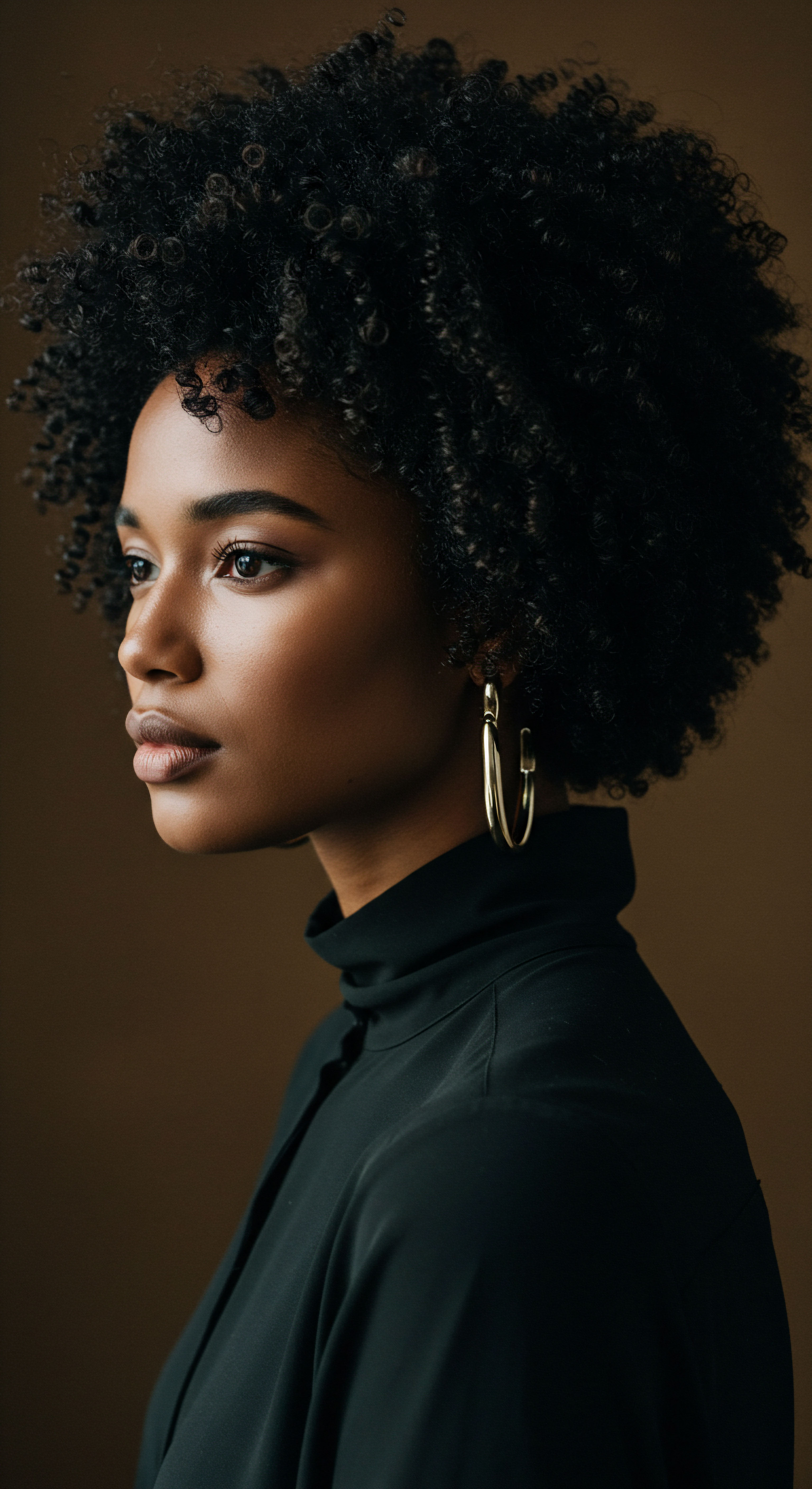
What Are the Societal Implications of Genetic Hair Insights?
As genetic insights into hair become more accessible, we must consider the broader societal and ethical landscape. The ability to identify genetic predispositions for certain hair traits could, on one hand, foster greater self-acceptance and reduce the pressure to conform to narrow beauty ideals. By understanding that certain hair characteristics are simply part of one’s inherited makeup, individuals might feel less inclined to fight their natural hair and more empowered to care for it authentically.
However, there are also considerations around equity and access. If advanced, genetically-informed hair care becomes the gold standard, how will it be made available to all? Will it inadvertently create new beauty hierarchies based on genetic “optimization”? These are important questions that the scientific and beauty communities must address as this field develops.
The true promise lies in using this knowledge to democratize understanding and provide truly effective, respectful care for every unique head of hair, celebrating its inherent diversity rather than seeking to alter its fundamental genetic expression. The conversation must extend beyond product efficacy to encompass cultural sensitivity and inclusivity.
The dialogue around genetic predispositions and hair care also encourages a deeper appreciation for the rich cultural practices that have long existed. Many traditional hair care methods, passed down through generations, implicitly addressed the specific needs of textured hair long before the advent of modern genetic science. These practices, often rooted in botanical knowledge and observational wisdom, represent a profound, intuitive understanding of hair’s inherent characteristics. Integrating modern genetic insights with this ancestral wisdom offers a holistic and powerful path forward, recognizing that true hair wellness arises from both scientific understanding and cultural reverence.
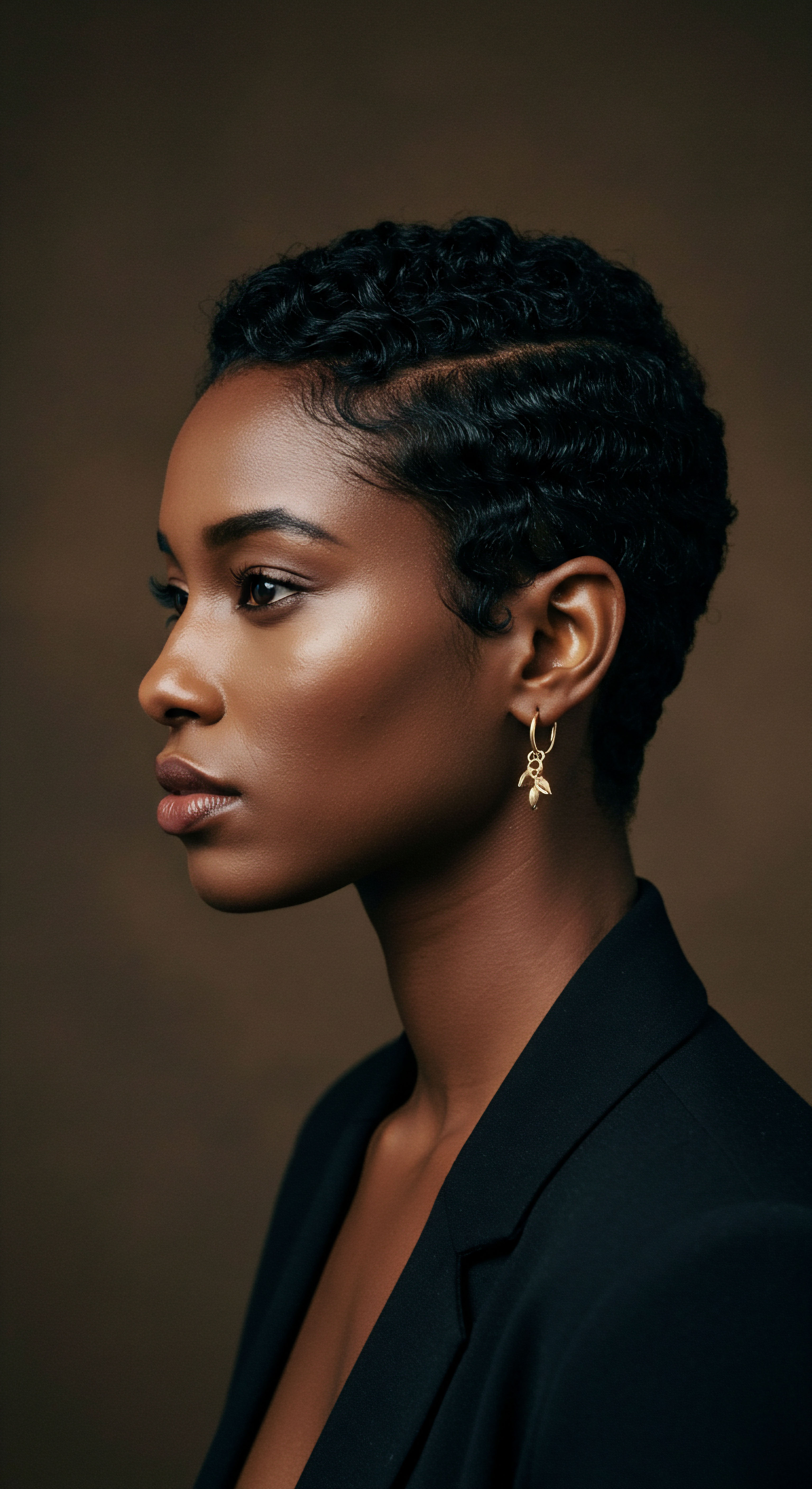
Reflection
As we step back from this exploration, the contours of a more nuanced understanding of hair care begin to appear. The journey from the microscopic helix to the vast expanse of cultural practice reveals that our hair is a living record, a testament to our ancestry and our unique biological story. Knowing these predispositions offers a pathway not to control, but to cooperate with our hair, choosing products and practices that truly honor its intrinsic nature. It is a gentle invitation to a deeper relationship with ourselves, where science and intuition dance in quiet harmony, guiding us towards strands that do not merely exist, but truly flourish in their authentic glory.

References
- Khumalo, N. P. et al. “Hair structural and genetic characteristics in African populations ❉ a review.” Journal of Cosmetic Science, vol. 60, no. 1, 2009, pp. 101-112.
- Fujimoto, A. et al. “A genetic study of hair texture and density in Japanese populations.” Journal of Investigative Dermatology, vol. 129, no. 1, 2009, pp. 121-127.
- Trueb, R. M. “Genetics of hair disorders.” Dermatology, vol. 223, no. 1, 2011, pp. 2-10.
- Rogers, G. E. “Hair follicle differentiation and keratinization.” Journal of Investigative Dermatology, vol. 81, no. 1 Suppl, 1983, pp. 2S-8S.
- Tobin, D. J. “Biochemistry of human hair ❉ a molecular and structural update.” Journal of Investigative Dermatology Symposium Proceedings, vol. 12, no. 1, 2007, pp. 2-11.
- Randall, V. A. “Androgens and hair growth ❉ the enigma of the hair follicle as a mini-organ.” Dermatologic Clinics, vol. 21, no. 1, 2003, pp. 1-14.
- Yang, F. et al. “Hair morphology in relation to environmental and genetic factors.” Journal of Human Genetics, vol. 55, no. 1, 2010, pp. 3-10.